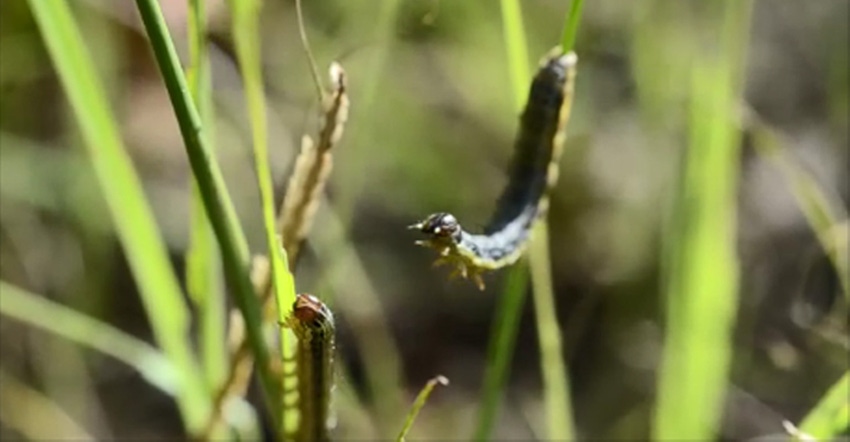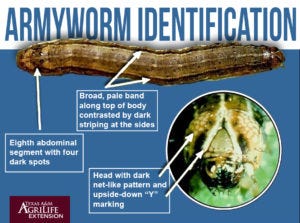
Fall armyworms could follow rainfall delivered by Tropical Storm Barry, warns a Texas A&M AgriLife Extension Service expert.
Texas A&M AgriLife Extension Service agents in a few Central and East Texas counties have reported armyworm activity in hayfields and pastures over the past few weeks. Dr. Vanessa Corriher-Olson, AgriLife Extension forage specialist in Overton, said producers should expect an increase in armyworm numbers, especially in areas where Tropical Storm Barry delivers rainfall and cooler temperatures.
“I’ve seen a few reports about armyworms, and this expected rain could mean an explosion in their populations,” she said. “Armyworms can devastate grazing and forage production pastures quickly. So, producers need to be mindful to watch their pastures for the pest. It is shaping up to be a good hay production year following such a poor season, and it would be a shame to lose a cutting or valuable grazing to armyworms.”

Armyworm moths can lay up to 2,000 eggs that hatch in two to three days, according to a 2015 report by AgriLife Extension entomologist Dr. Allen Knutson. There are typically four to five generations per year.
Corriher-Olson said armyworm caterpillars are picky eaters that prefer high-quality, fertilized forage typically found on fields maintained for hay production. They are a common pest of Bermuda grass, sorghum, corn, wheat, ryegrass and many other crops in northern and central Texas.
Producers should scout each morning for armyworms, she said. Armyworms are night feeders that try to avoid daytime temperatures. They are green, brown or black in color and can be identified by the white inverted Y on their head. Armyworms, which can grow up to 1 inch in length when mature, got their name because they appear to march across hay fields, consuming the grass in their path.
The threshold for insecticide spray treating a pasture is three or more armyworms per square foot, Corriher-Olson said. Armyworms in those numbers should be treated immediately. Armyworms in the last two or three days of their larvae stage consume 85% of their diet.
Corriher-Olson recommends insecticides labeled for armyworm control in pastures and hayfields. She said applicators should always follow all label instructions on pesticide use and restrictions.
“You don’t need to wait a day if their numbers are at threshold,” she said. “They are going to do a lot of damage quickly. If you find them in the morning, spray that day.”
More information about armyworms can be found in Knutson’s report The Fall Armyworm – Pest of Pastures and Hay at: http://foragefax.tamu.edu/files/2015/08/Armyworm-Fact-Sheet-2015.pdf.
Source: is AgriLife TODAY, which is solely responsible for the information provided and is wholly owned by the source. Informa Business Media and all its subsidiaries are not responsible for any of the content contained in this information asset.
About the Author(s)
You May Also Like




